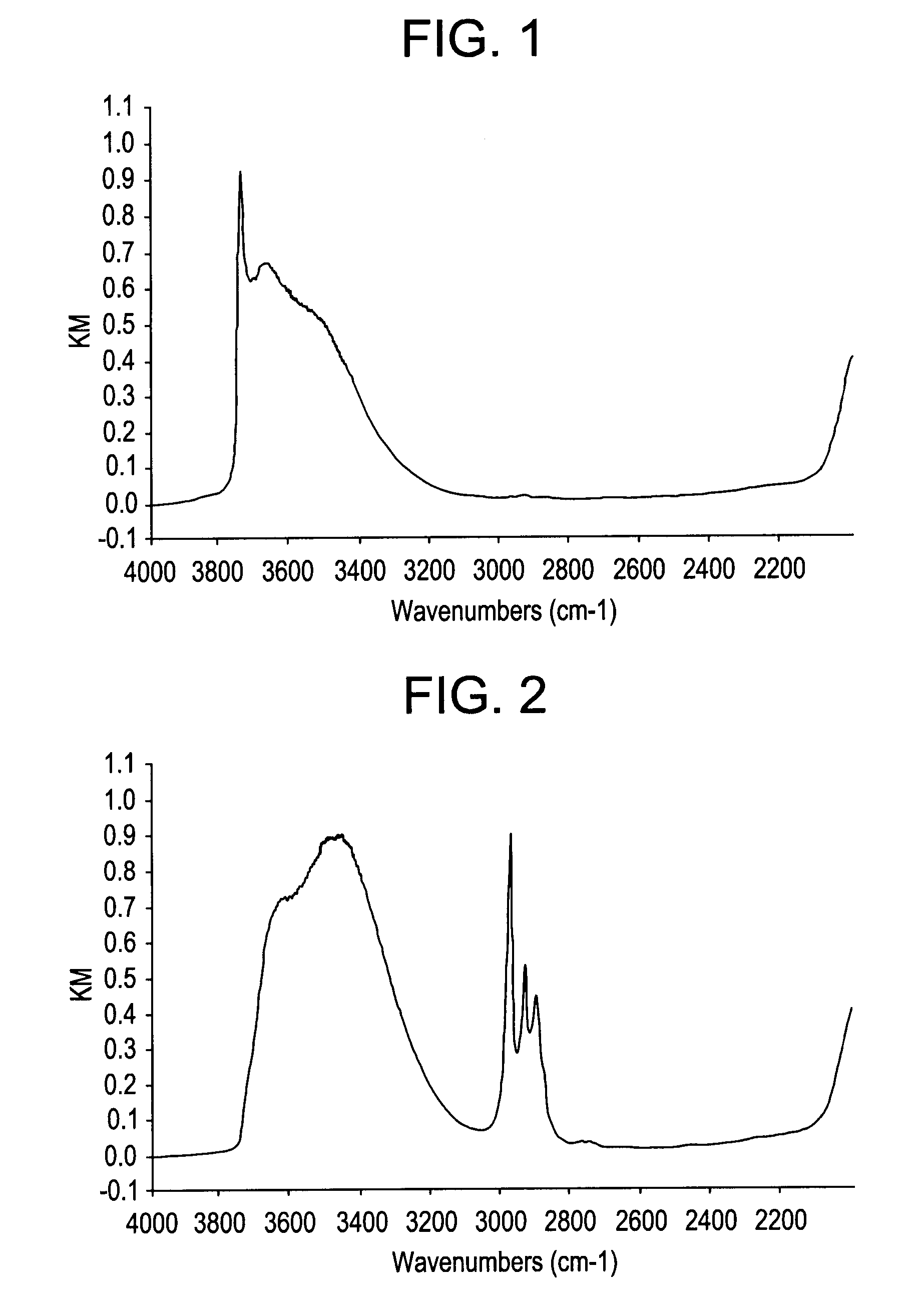Method for producing cycloalkanol and/or cycloalkanone
a technology of cycloalkanol and cycloalkanone, which is applied in the preparation of carbonyl compounds by oxidation, physical/chemical process catalysts, metal/metal-oxide/metal-hydroxide catalysts, etc., can solve the problems of unsatisfactory catalyst activity and selectivity points, and achieve favorable degree of conversion and favorable selectivity coefficient
- Summary
- Abstract
- Description
- Claims
- Application Information
AI Technical Summary
Benefits of technology
Problems solved by technology
Method used
Image
Examples
reference example 1
[0028]2.51 g of fumed silica (manufactured by ALDRICH Co.), 4.18 g of cobalt (II) acetate tetrahydrate (manufactured by Wako Pure Chemical Industries, Ltd.) and 37.27 g of water were charged in a 300 ml flask and then stirred at 47° C. for 3 hours. The resulting mixture was cooled to room temperature and then filtered. The residue washed with water and dried at 100° C. to obtain a cobalt supported silica. An infrared absorption spectrum of the resulting cobalt supported silica was measured by the following procedure. The results are shown in FIG. 1.
[Measurement of Infrared Absorption Spectrum]
[0029]A cobalt supported silica was charged in a catalytic cell (Diffuse Reflectance Heat Chamber, Model HC900, manufactured by SPECTRA-TECH Co.) and set in an apparatus for measuring an infrared absorption spectrum (Magna 760-ESP, manufactured by NICOLET Co.) and, after deaeration at 200° C. for one hour, an infrared absorption spectrum was measured. The measuring conditions are as follows: th...
reference example 2
[0030]0.2 g of the cobalt supported silica obtained in Reference Example 1 and 2.0 g of ethyl orthosilicate (manufactured by Wako Pure Chemical Industries, Ltd.) were charged in a flask and then stirred under a nitrogen atmosphere at 90° C. for 7 hours and a half. The resulting mixture was cooled to room temperature and ethanol was added, followed by stirring and further filtration. The residue washed with acetone, dried under 0.1 Torr (13 Pa) at 40° C. for 2 hours and then dried at 60° C. An infrared absorption spectrum of the resulting cobalt supported silica subjected to a catalytic treatment with ethyl orthosilicate was measured in the same manner as in Reference Example 1. The results are shown in FIG. 2.
[0031]As shown in FIG. 1, a peak attributed to a so-called terminal silanol group is observed at about 3740 cm−1 in the cobalt supported silica obtained in Reference Example 1, while the same peak is not observed in the cobalt supported silica subjected to a catalytic treatment...
example 1
[0032]In a 300 ml autoclave, 100 g (1.2 mol) of cyclohexane and 0.1 g of the cobalt supported silica subjected to a catalytic treatment with ethyl orthosilicate obtained in Reference Example 2 were charged. After increasing the pressure in the system to 0.93 MPa at room temperature using nitrogen and heating to 130° C., the reaction was carried out under the flow of a gas having an oxygen concentration of 5 vol % for 8 hours.
[0033]5 hours after the beginning of the reaction, the degree of conversion of cyclohexane was 5.4%, the selectivity coefficient of cyclohexanone was 26.6%, the selectivity coefficient of cyclohexanol was 46.6%, and the selectivity coefficient of cyclohexyl hydroperoxide was 13.7% (total electivity coefficient: 8 6.9%). 8 hours after the beginning of the reaction (upon completion), the degree of conversion of cyclohexane was 9.3%, the selectivity coefficient of cyclohexanone was 35.1%, the selectivity coefficient of cyclohexanol was 43.0%, and the selectivity co...
PUM
| Property | Measurement | Unit |
|---|---|---|
| temperature | aaaaa | aaaaa |
| oxidizing temperature | aaaaa | aaaaa |
| time | aaaaa | aaaaa |
Abstract
Description
Claims
Application Information
 Login to View More
Login to View More - R&D
- Intellectual Property
- Life Sciences
- Materials
- Tech Scout
- Unparalleled Data Quality
- Higher Quality Content
- 60% Fewer Hallucinations
Browse by: Latest US Patents, China's latest patents, Technical Efficacy Thesaurus, Application Domain, Technology Topic, Popular Technical Reports.
© 2025 PatSnap. All rights reserved.Legal|Privacy policy|Modern Slavery Act Transparency Statement|Sitemap|About US| Contact US: help@patsnap.com

